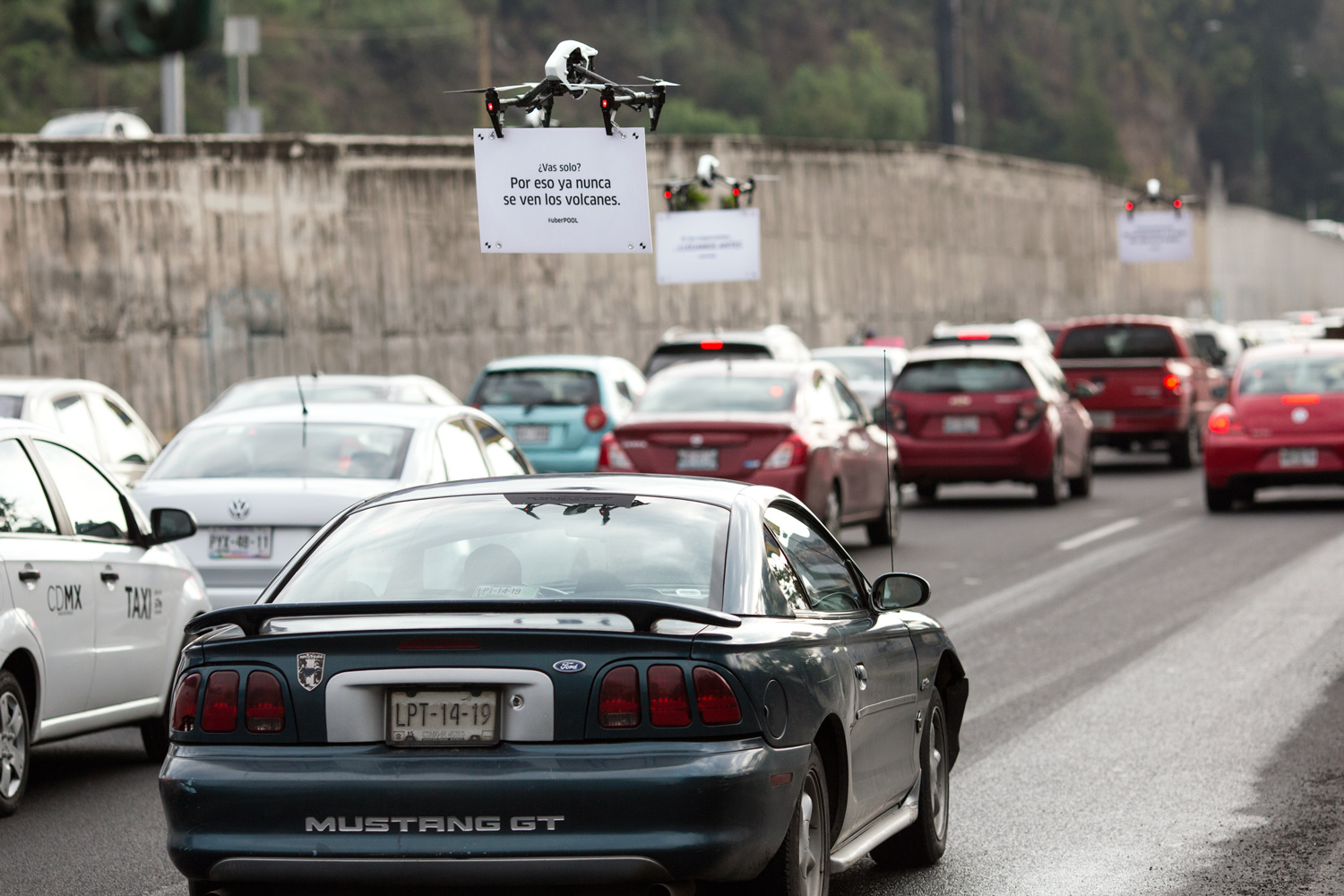Uber’s Ad-Toting Drones Are Heckling Drivers Stuck in Traffic

Drivers stuck in traffic in Mexico City lately have found themselves being buzzed by a fleet of sign-toting drones. “Driving by yourself?” some scolded in Spanish. “This is why you can never see the volcanoes”—a reference to the smog that often hovers over the mega-city and obscures two nearby peaks.
More on Uber and drones
Uber’s Bumpy Ride in China
Chinese Uber drivers are making a million trips a day, pleasing consumers but threatening traditional taxi drivers.
Who Will Protect You from Drone Surveillance?
The coming wave of commercial drones is already exposing gaps in today’s privacy laws.
Some U.S. Drones Are Getting Longer Leashes
Allowing commercial drones to fly more than one nautical mile from their pilot would make them much more useful.
Uber’s Pittsburgh Project Is a Crucial Test for Self-Driving Cars
The technology is being rapidly commercialized, though safety issues have yet to be settled.
It wasn’t exactly a plea for environmentalism, though—it was an ad for UberPOOL, part of Uber’s big push into markets across Latin America. As Bloomberg points out, Uber already does more business in Mexico City than any other city it operates in, and Brazil is its third-largest market after the U.S. and India. Uber sees Latin American countries as generally easier targets for expansion than either of its top two markets.
In the wake of a costly war with Didi Chuxing in China that finally forced Uber to wave a white flag, the company is going back on the offensive. And that, apparently, involves accosting drivers in gridlock with a swarm of drones.
(Read more: Bloomberg, “With Its Sale in China, Uber Drives a Better Bargain”)
Keep Reading
Most Popular
Large language models can do jaw-dropping things. But nobody knows exactly why.
And that's a problem. Figuring it out is one of the biggest scientific puzzles of our time and a crucial step towards controlling more powerful future models.
The problem with plug-in hybrids? Their drivers.
Plug-in hybrids are often sold as a transition to EVs, but new data from Europe shows we’re still underestimating the emissions they produce.
Google DeepMind’s new generative model makes Super Mario–like games from scratch
Genie learns how to control games by watching hours and hours of video. It could help train next-gen robots too.
How scientists traced a mysterious covid case back to six toilets
When wastewater surveillance turns into a hunt for a single infected individual, the ethics get tricky.
Stay connected
Get the latest updates from
MIT Technology Review
Discover special offers, top stories, upcoming events, and more.